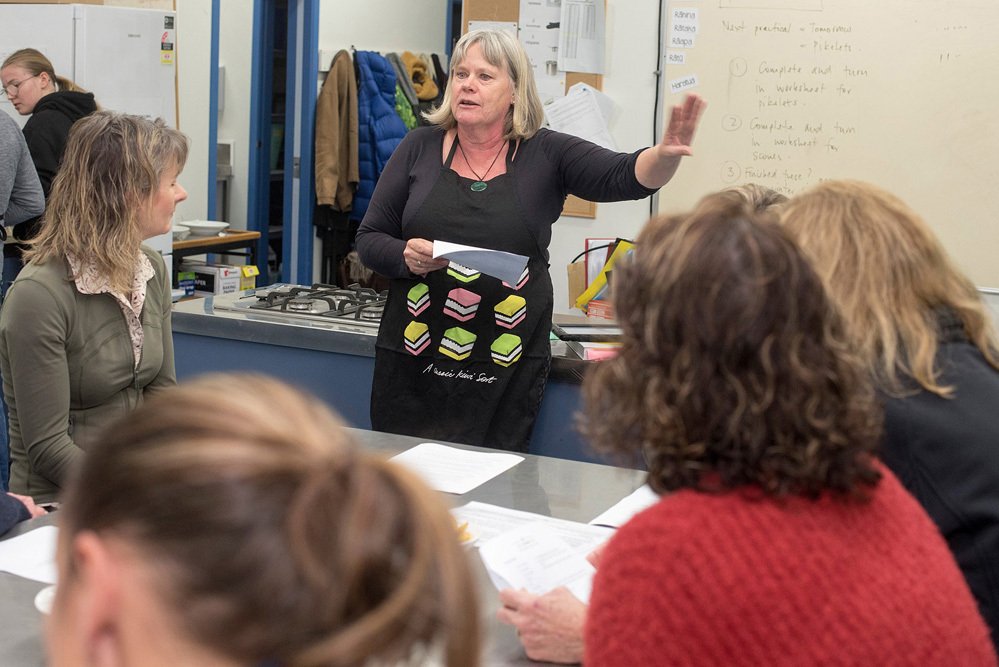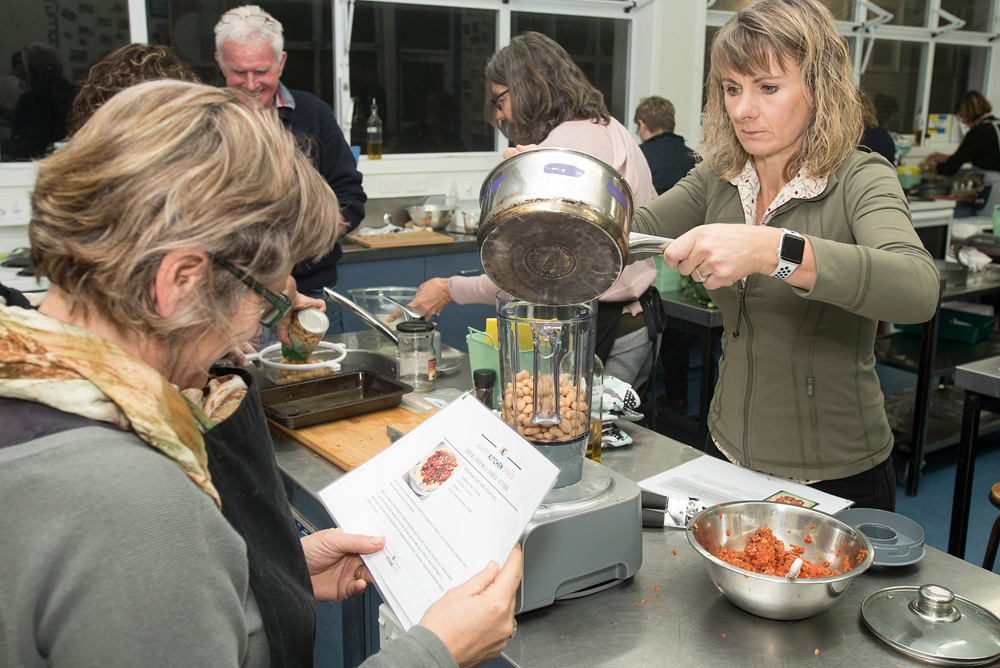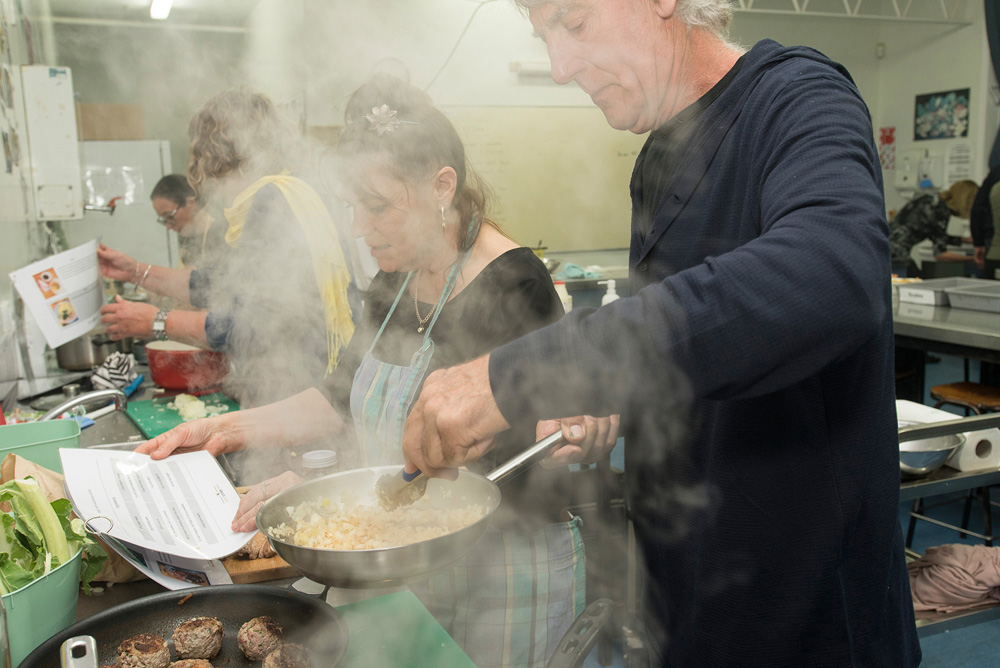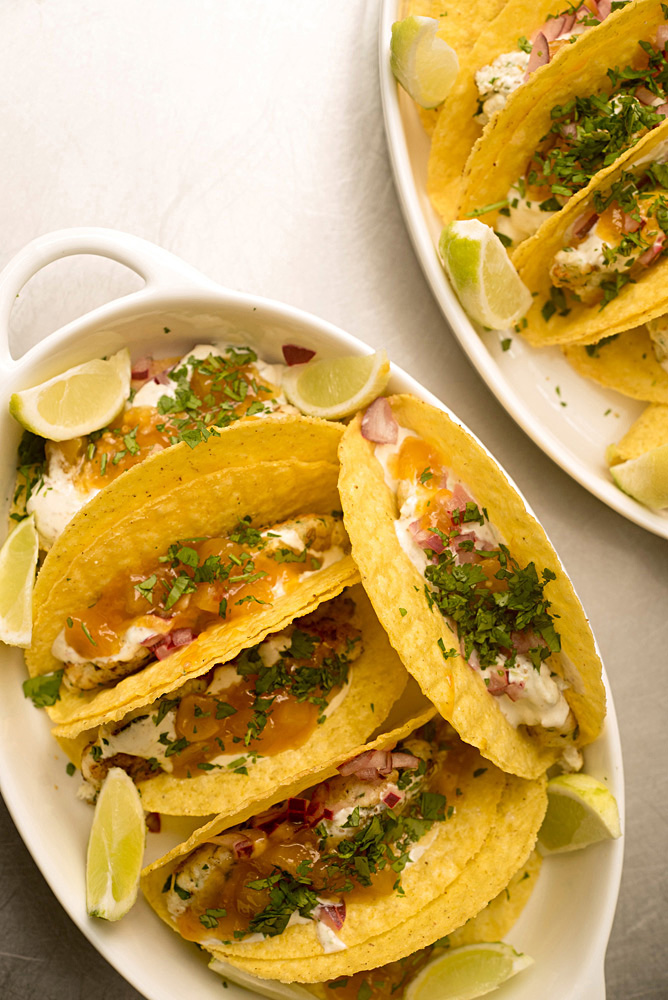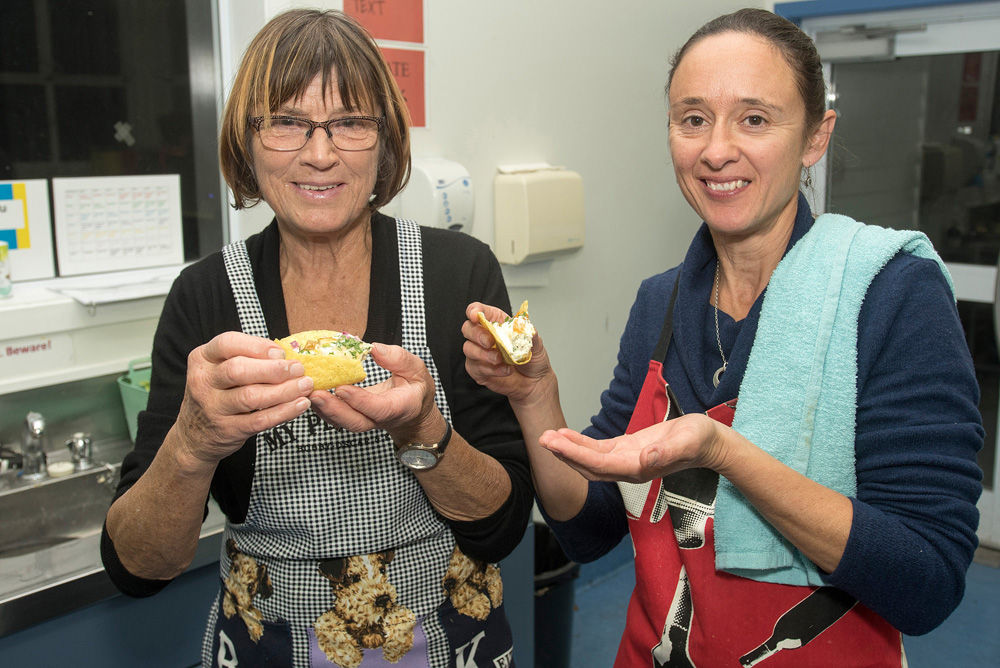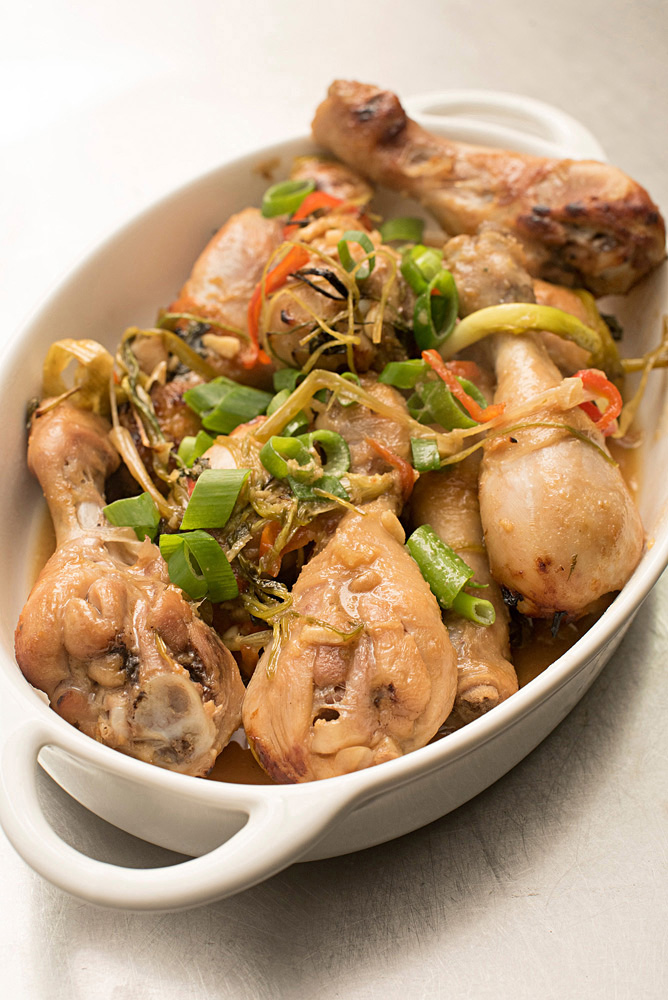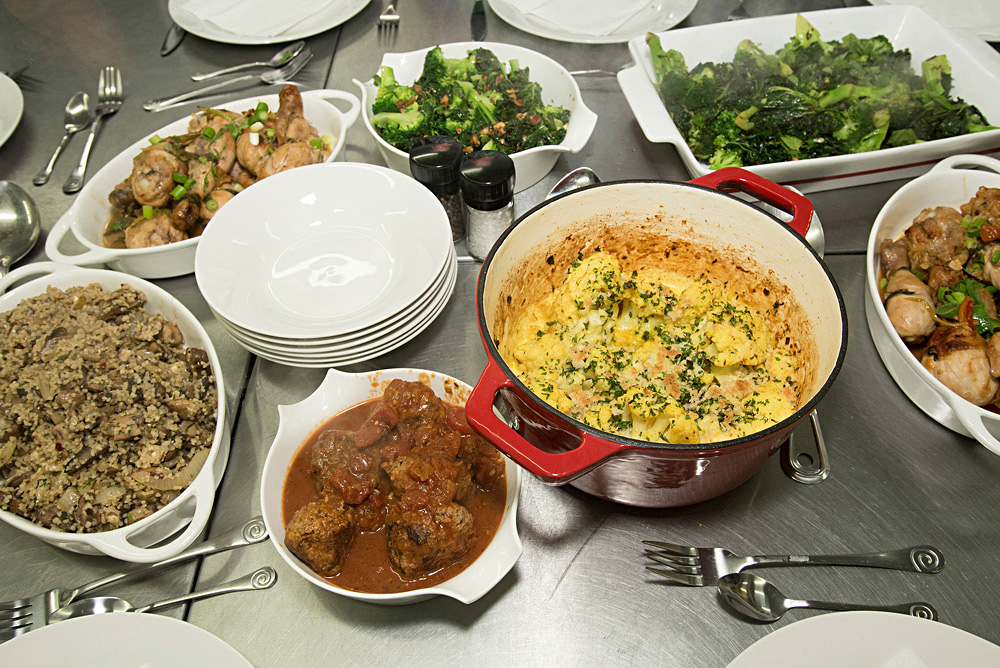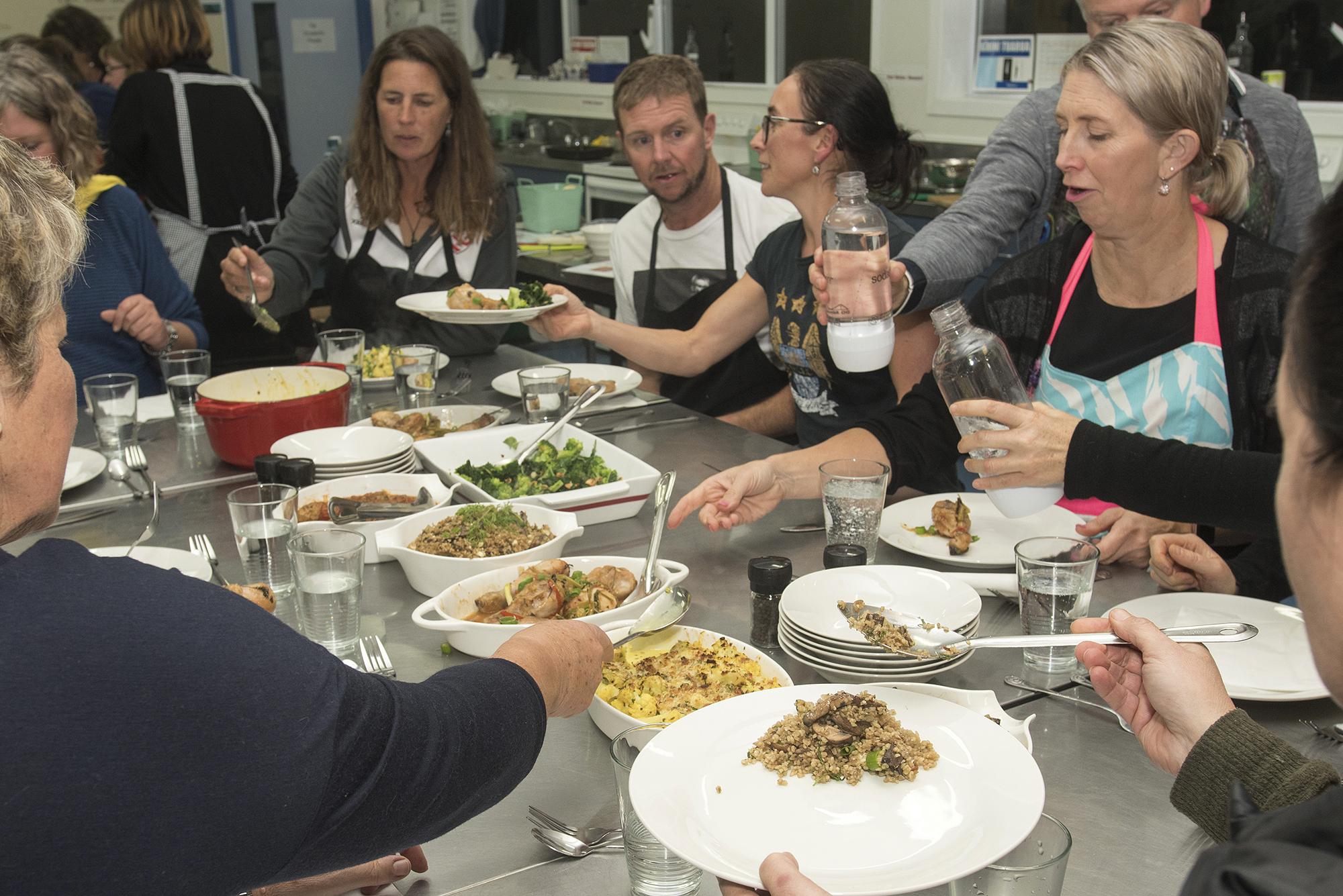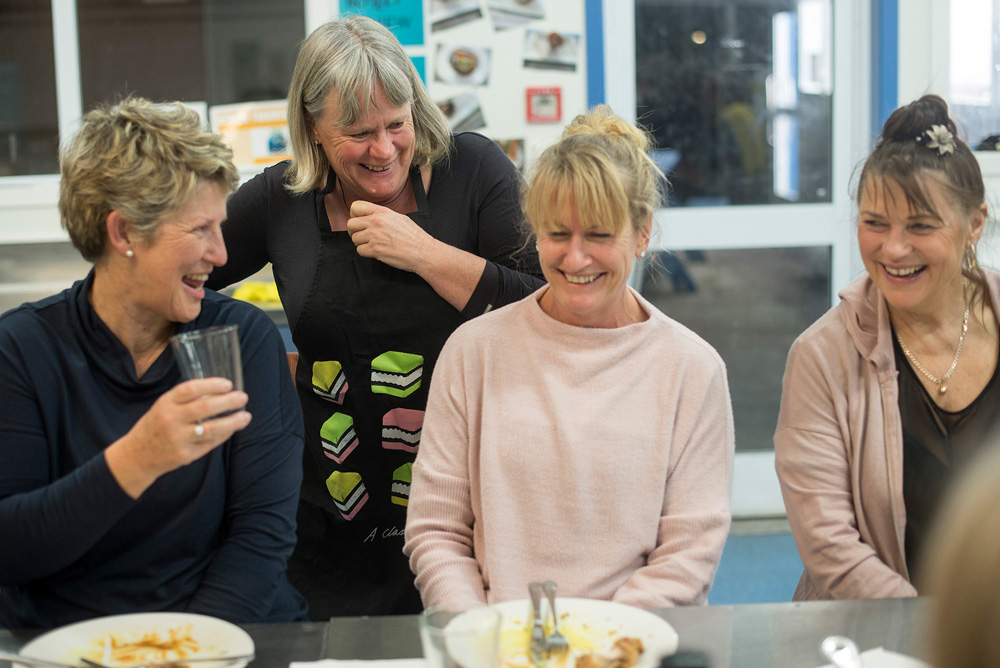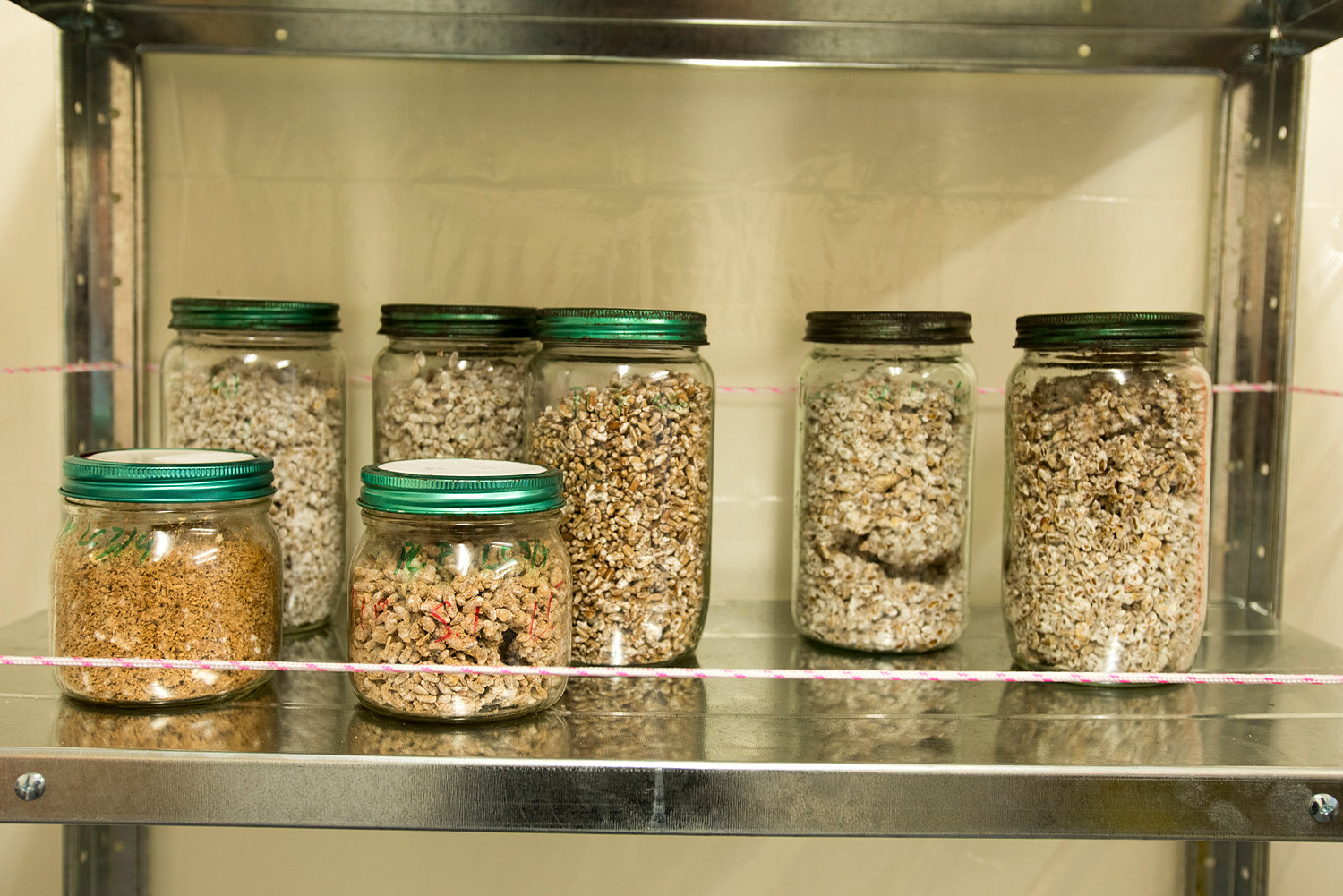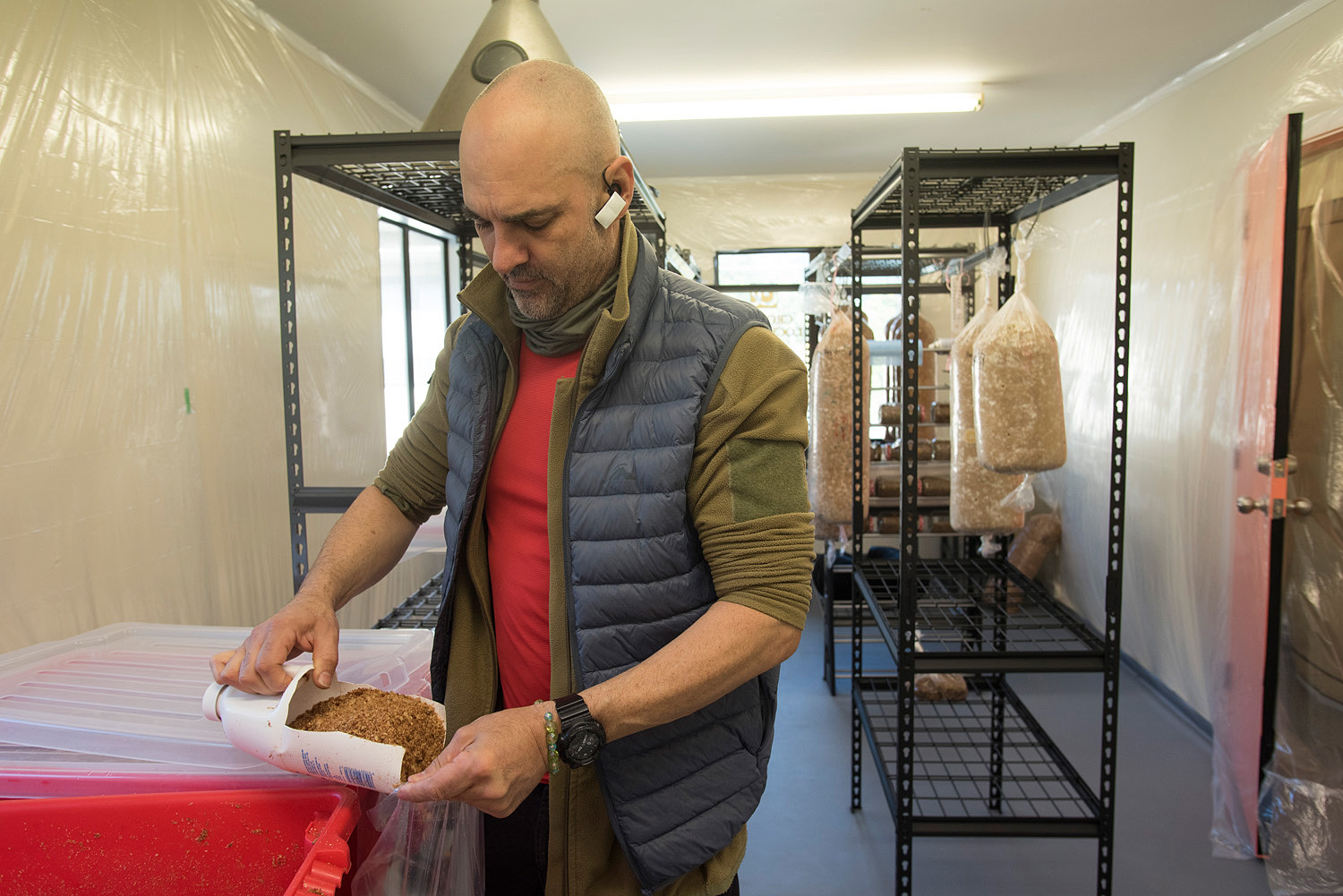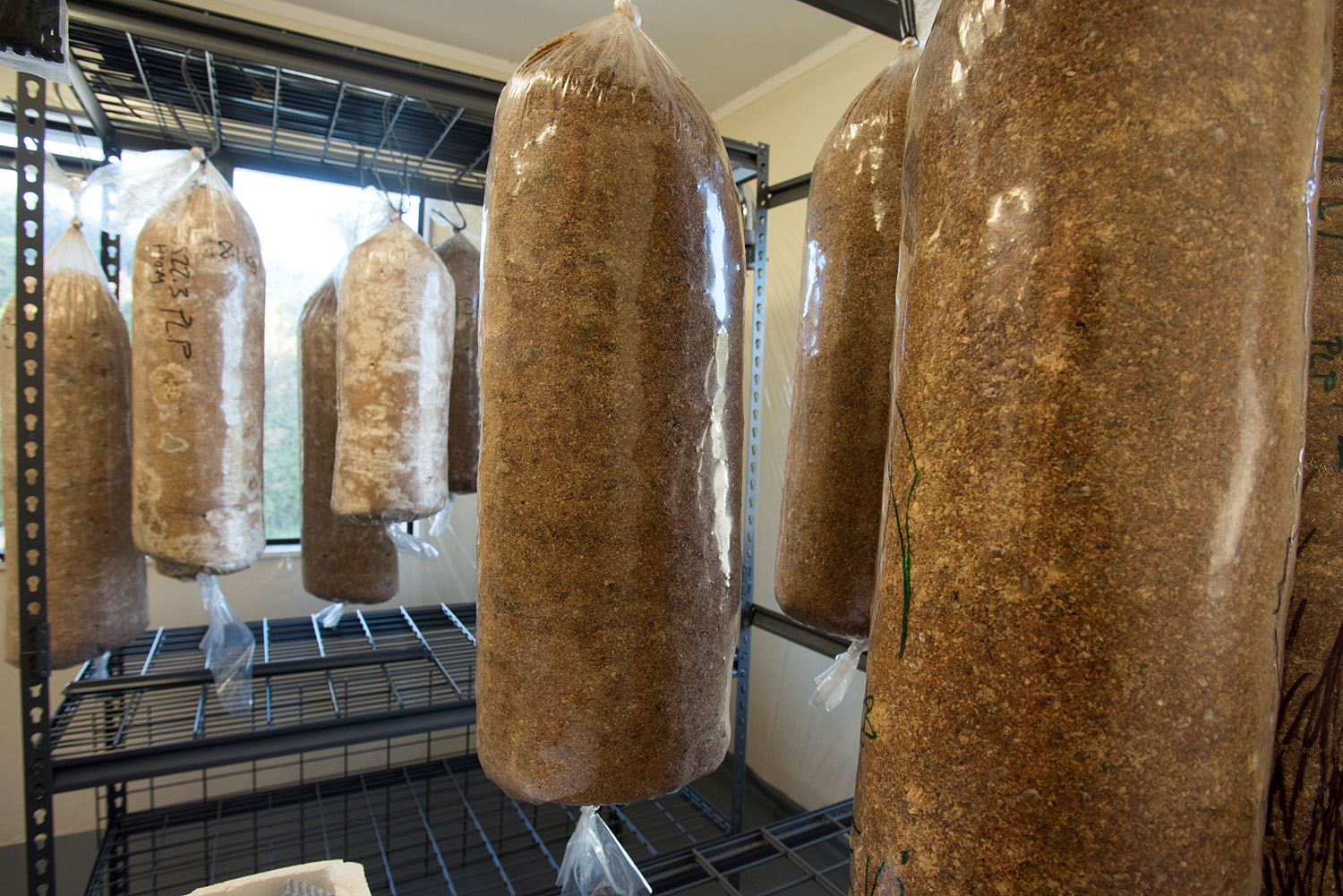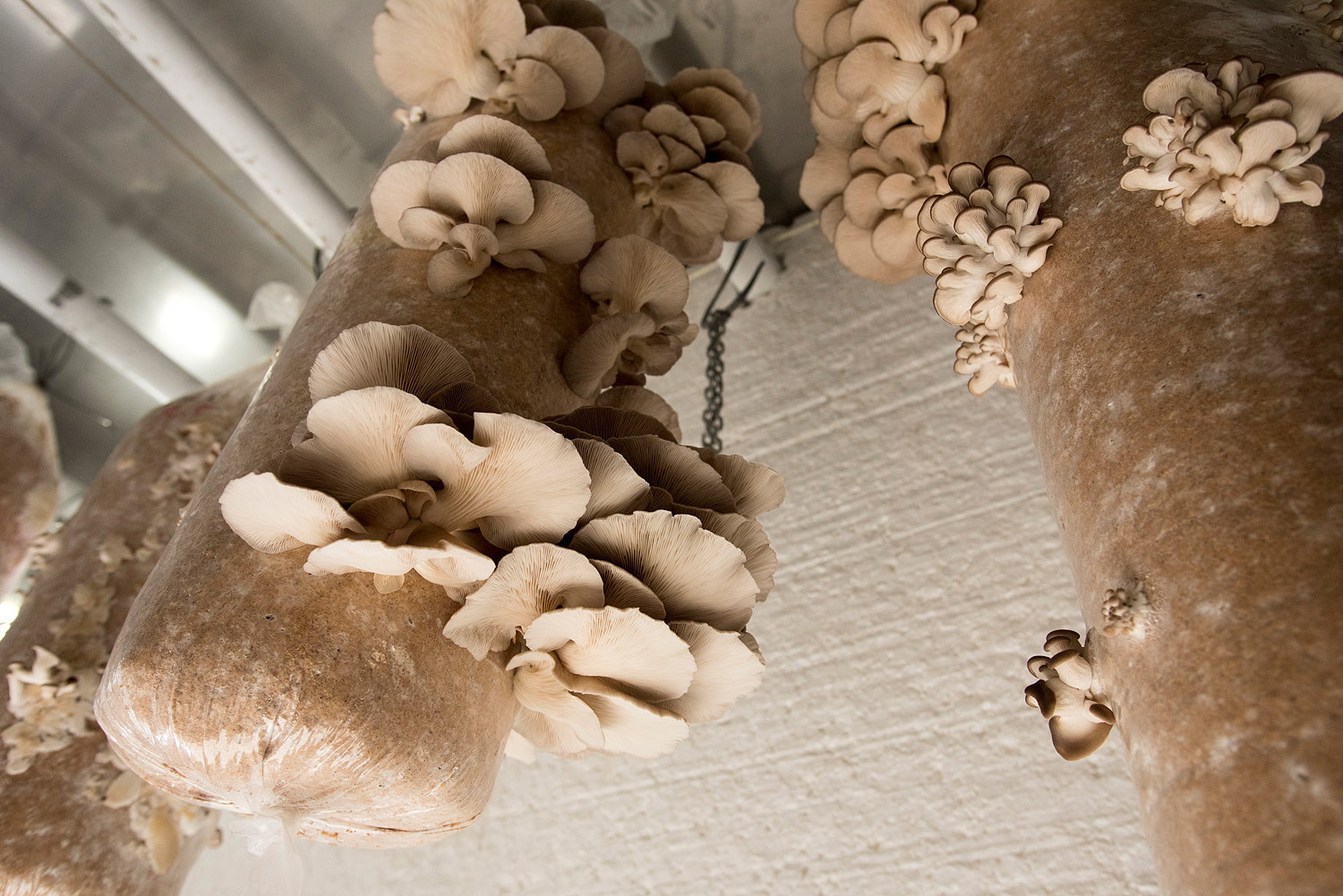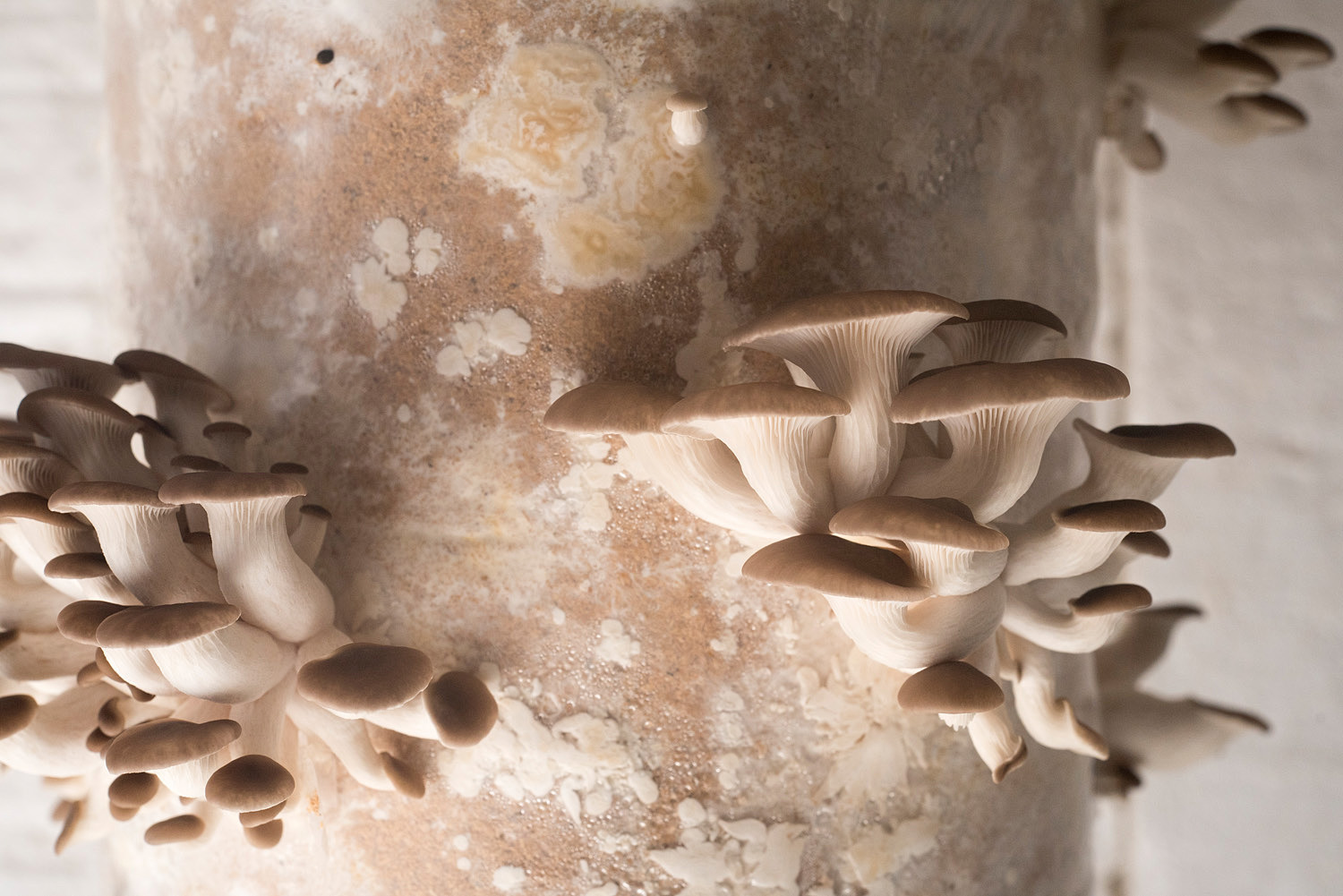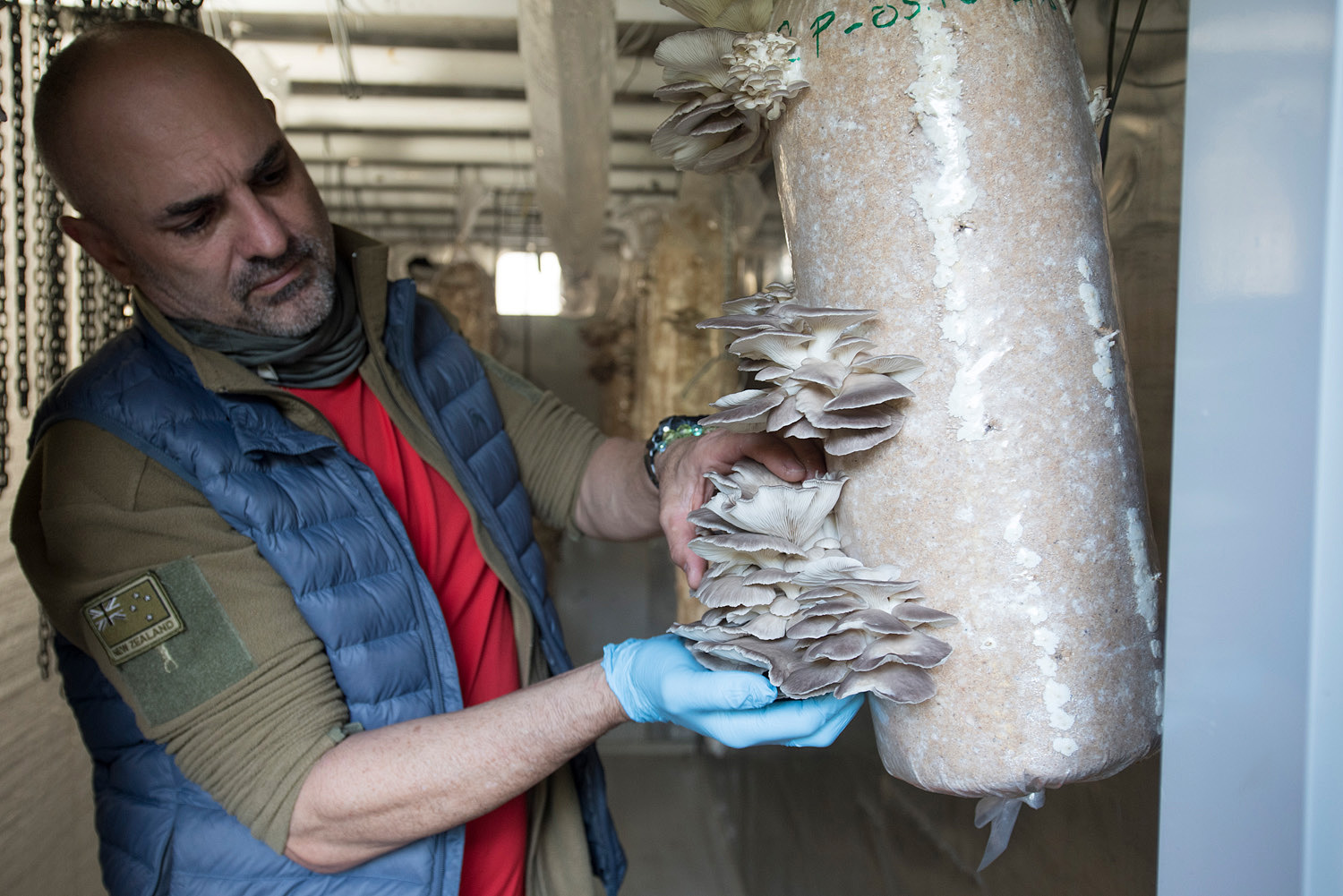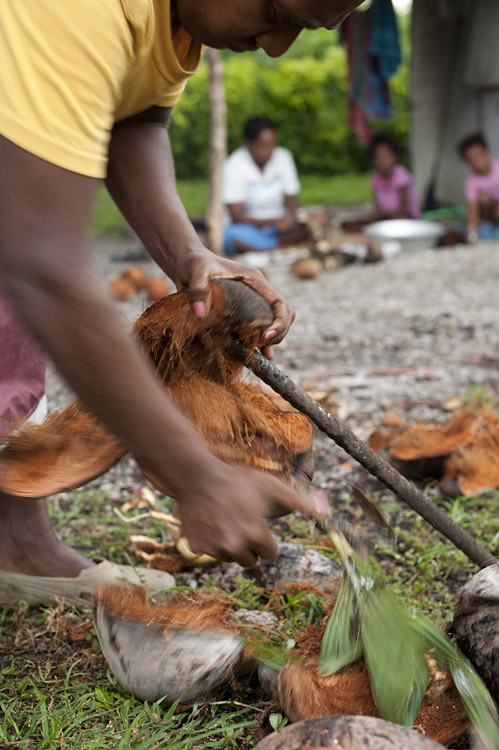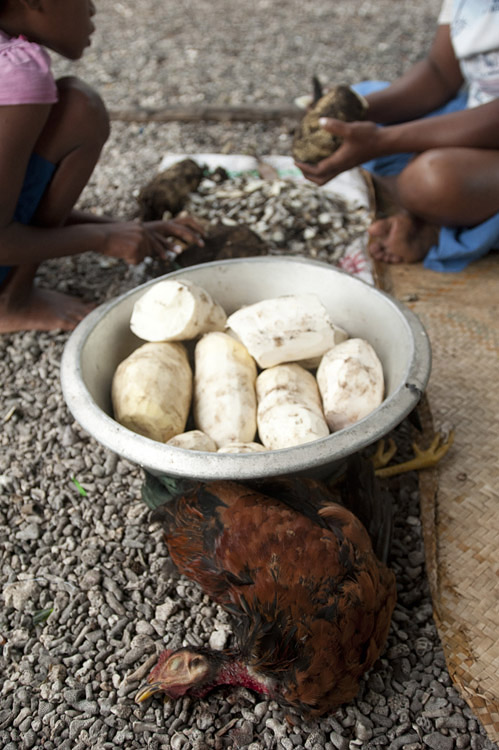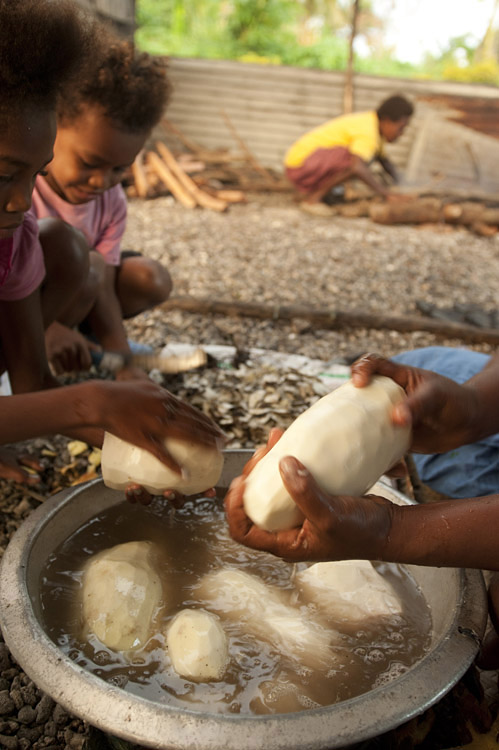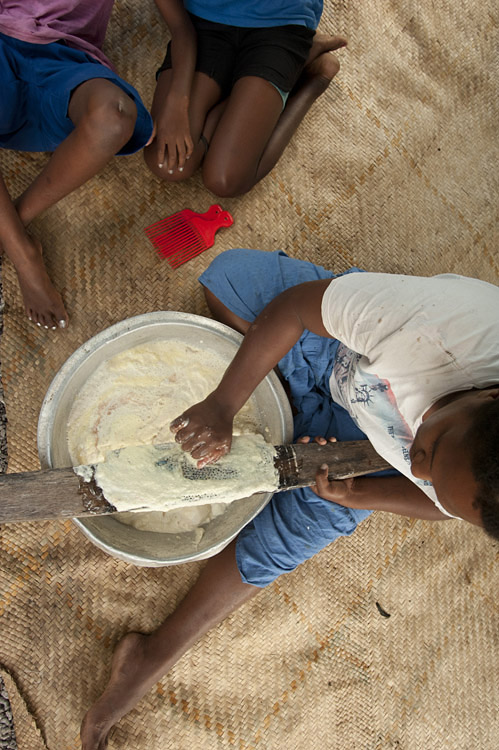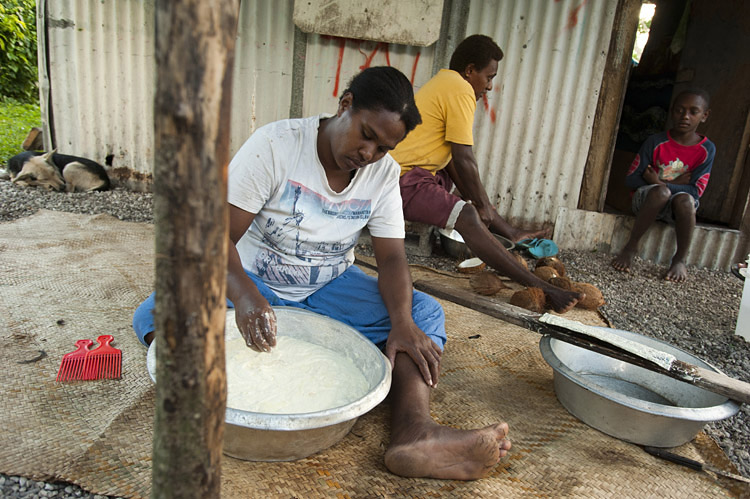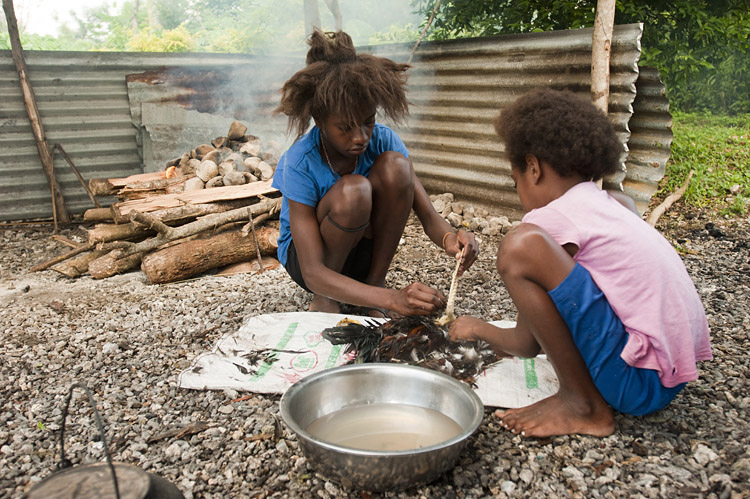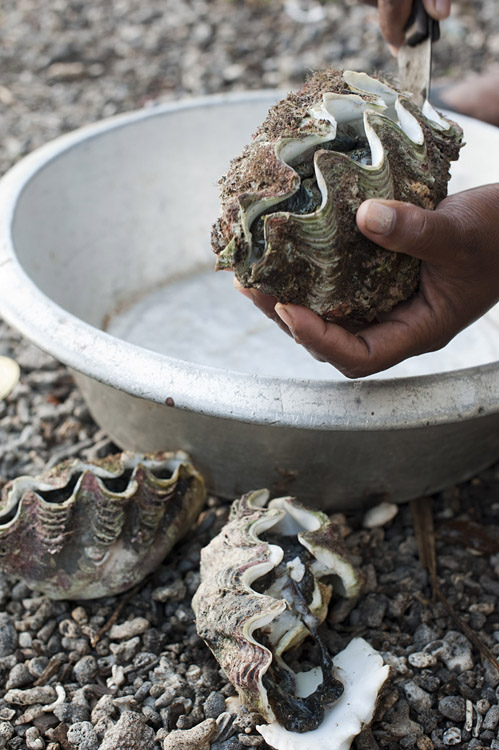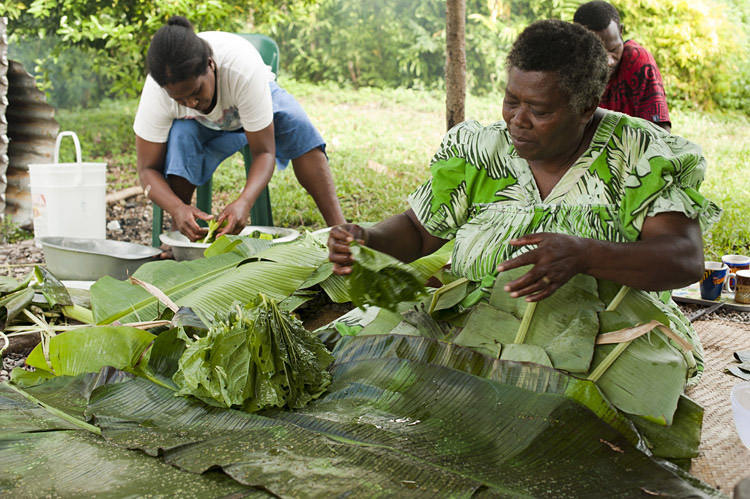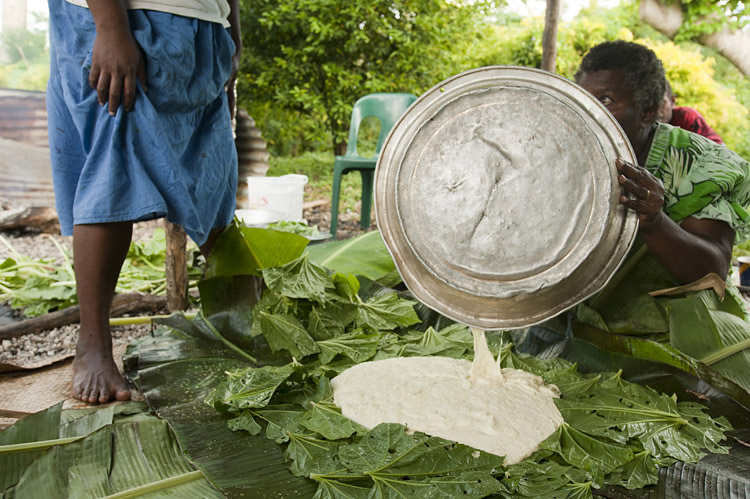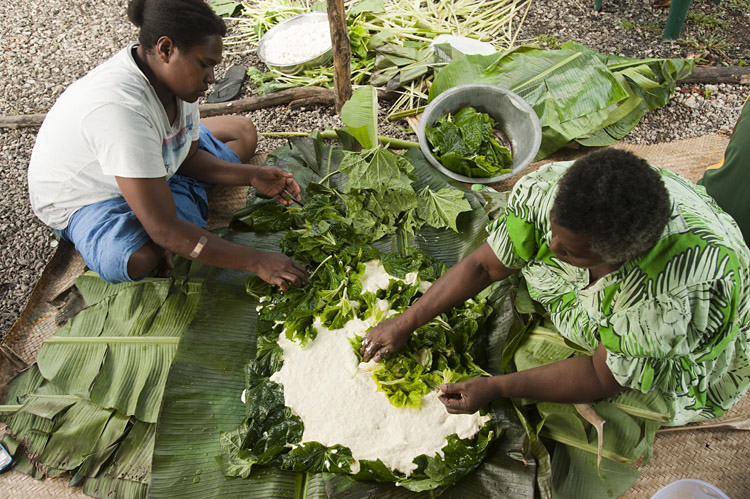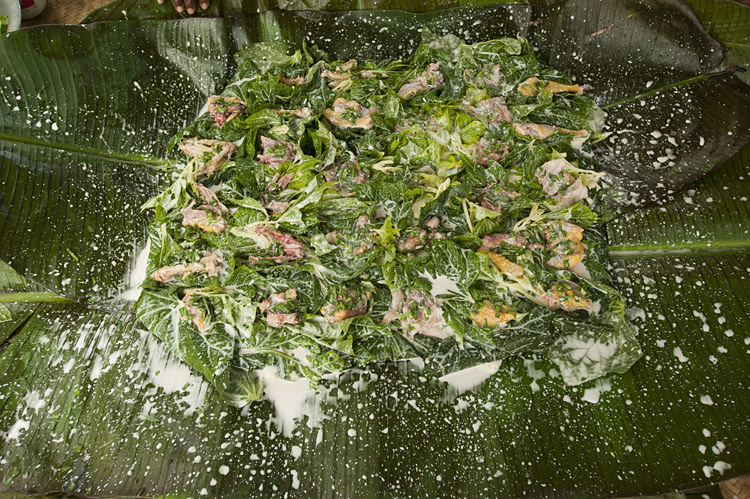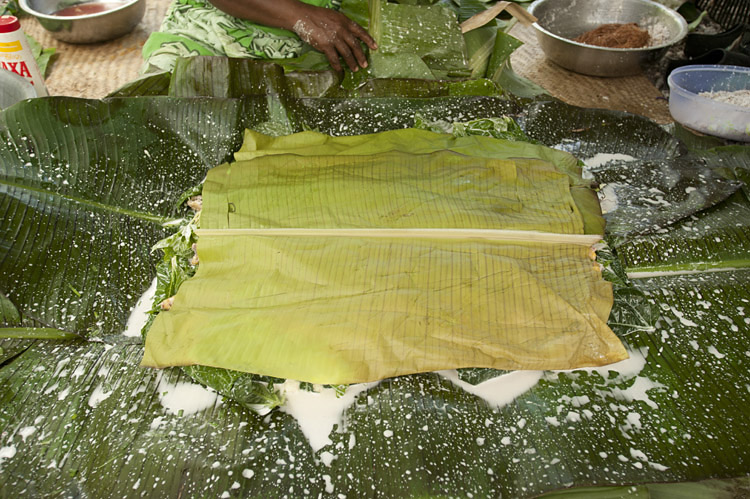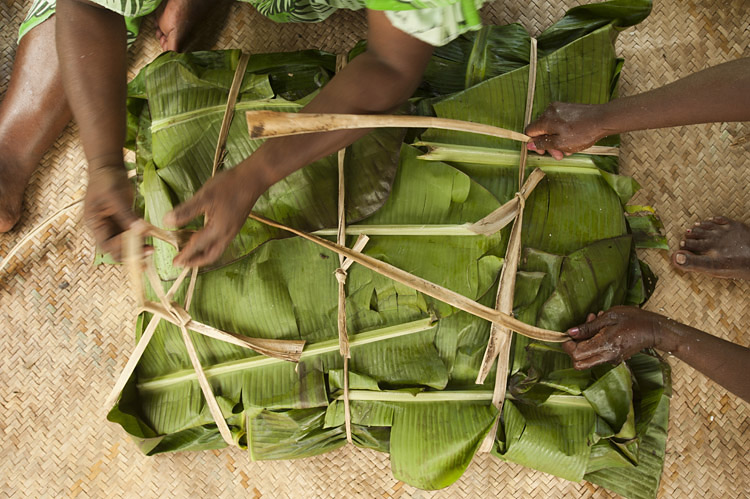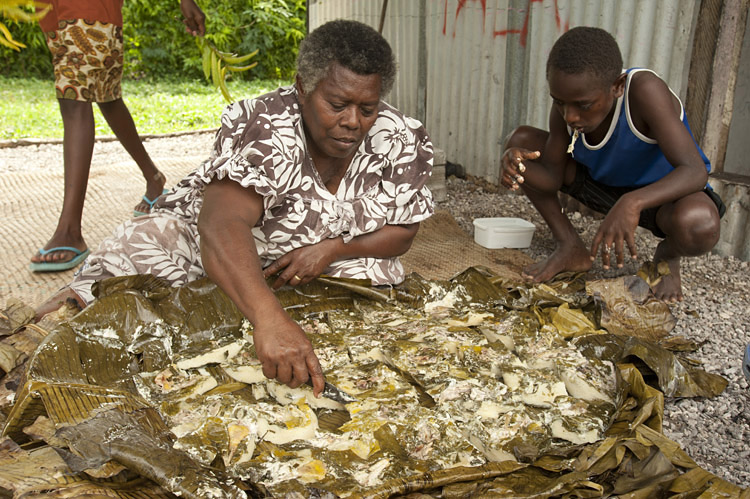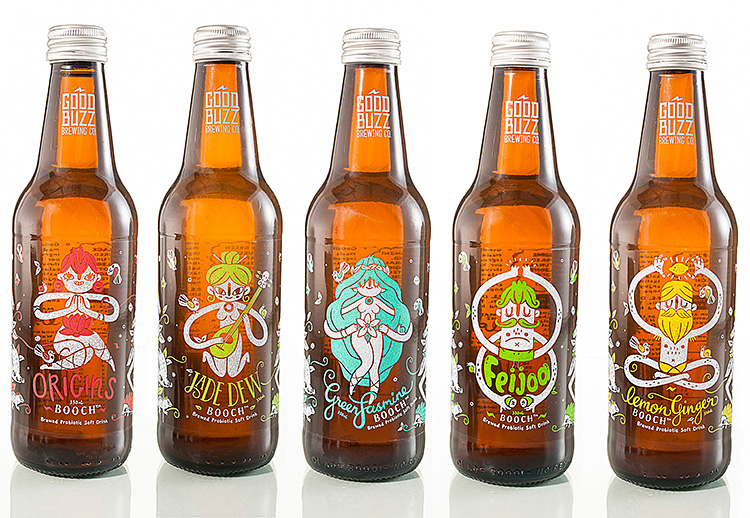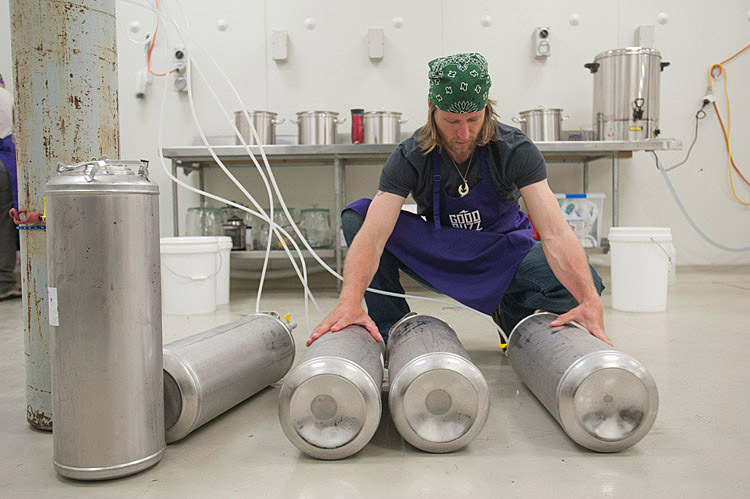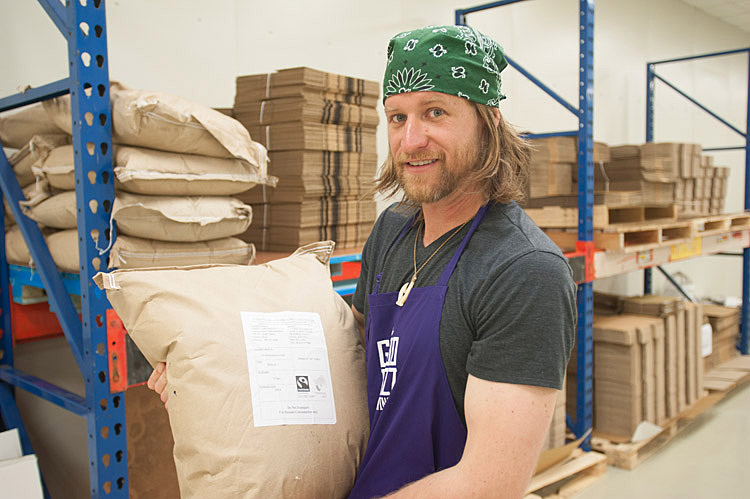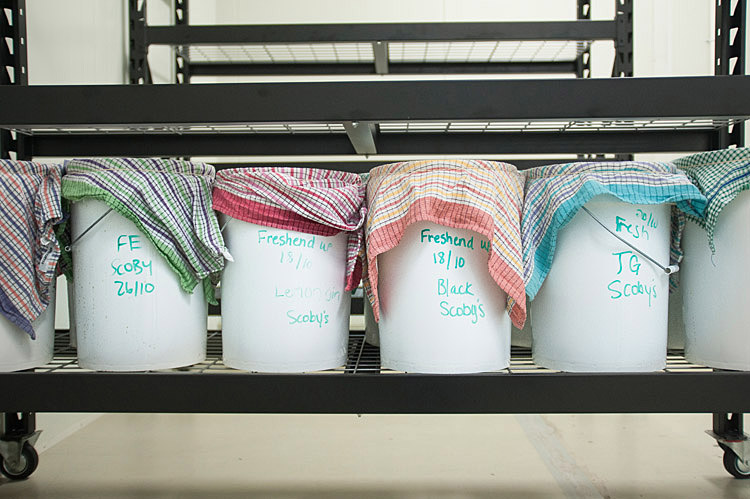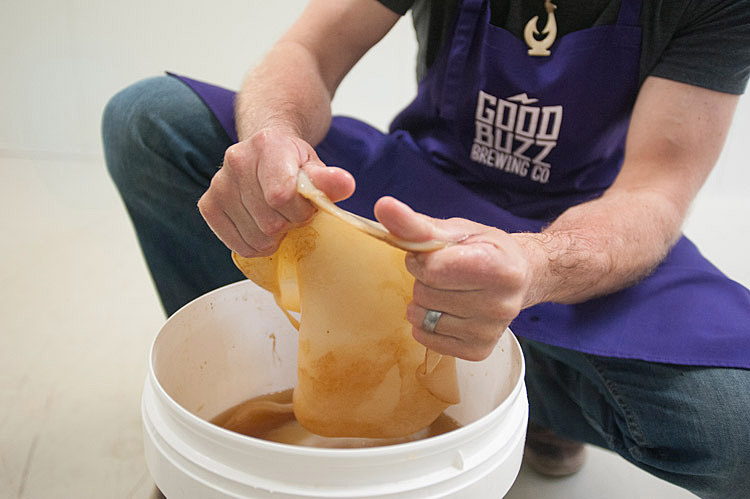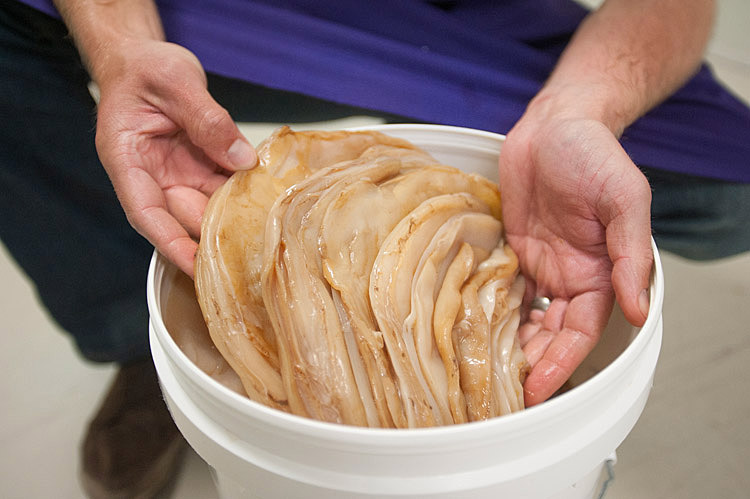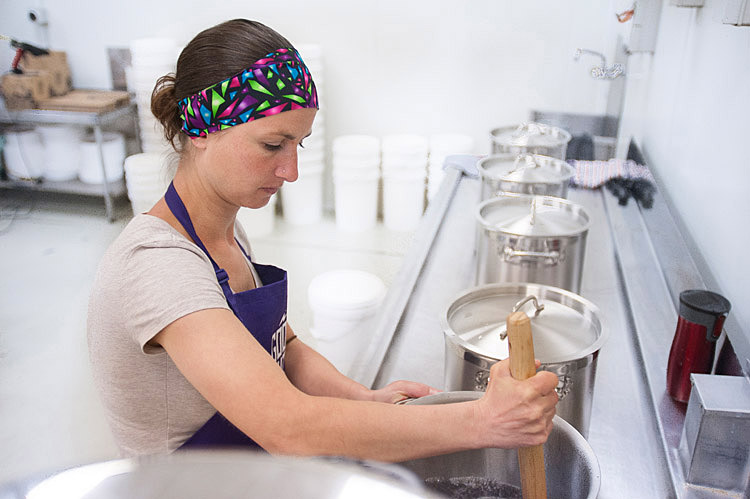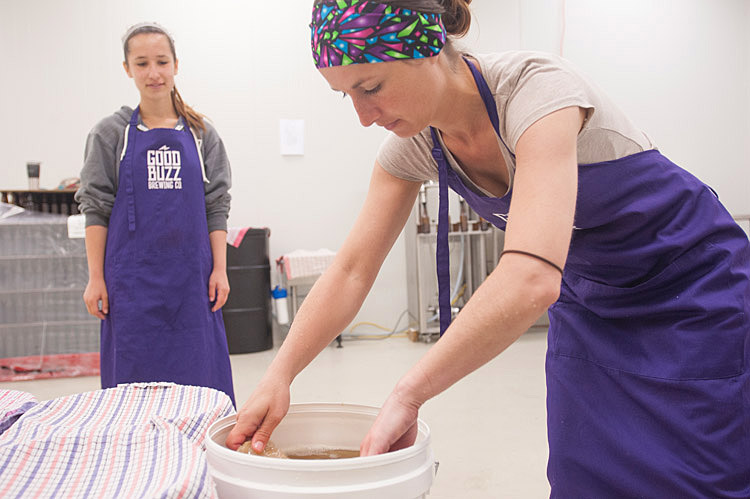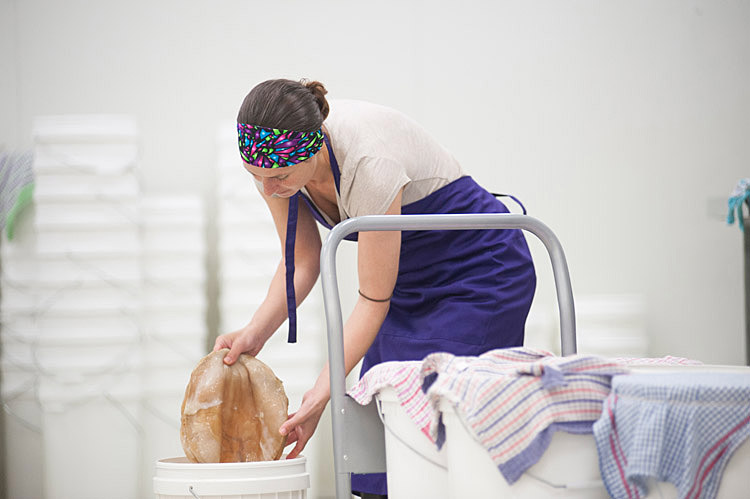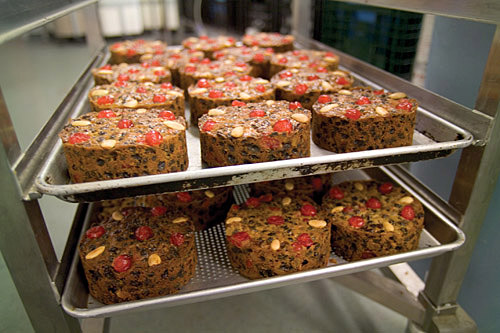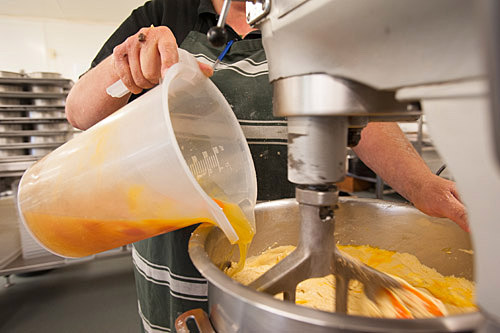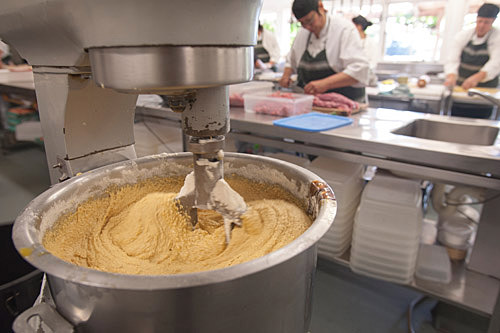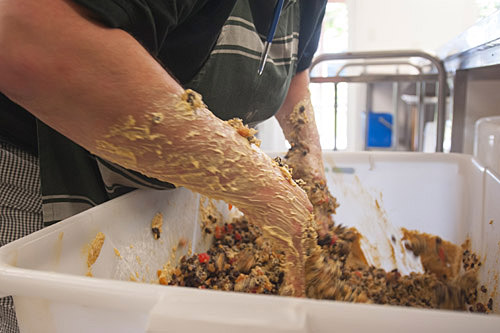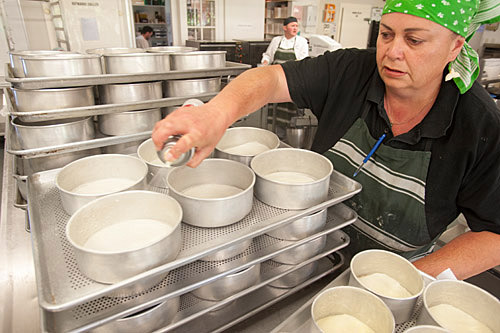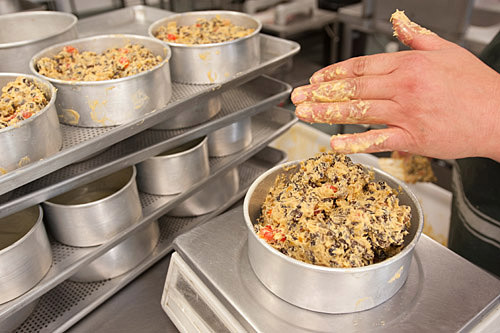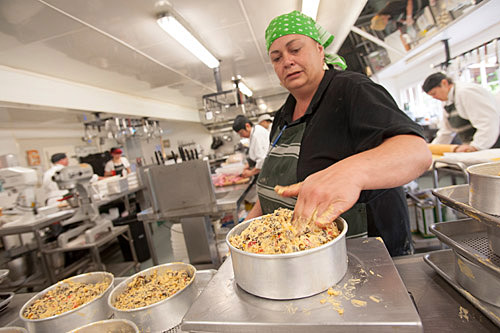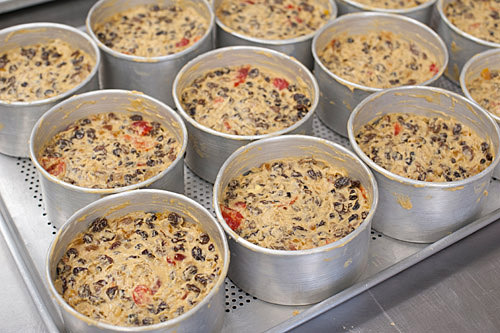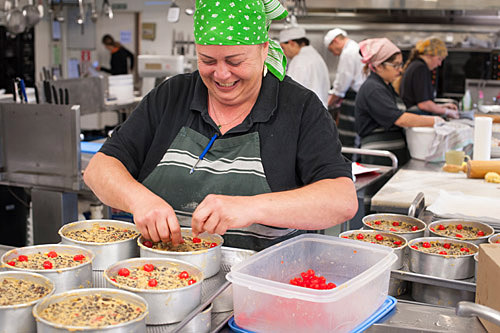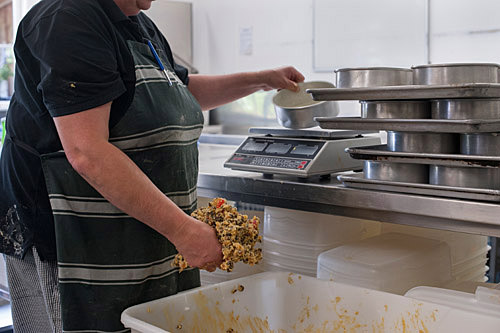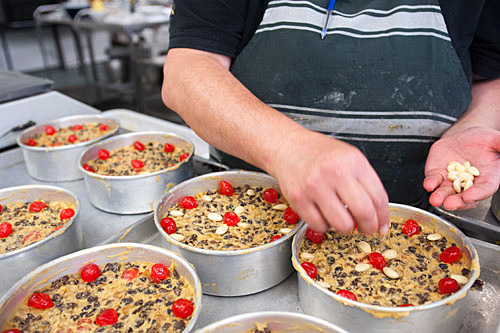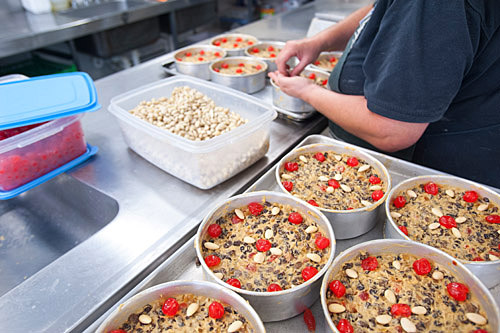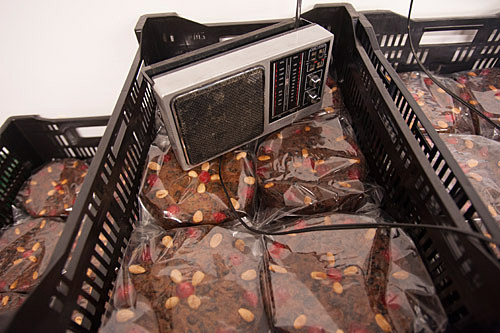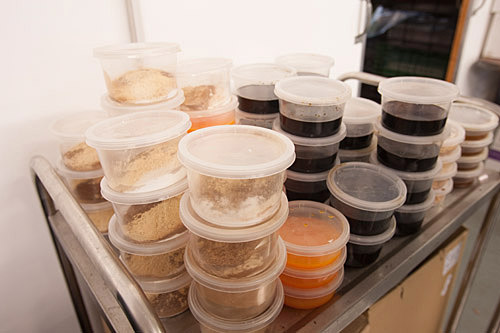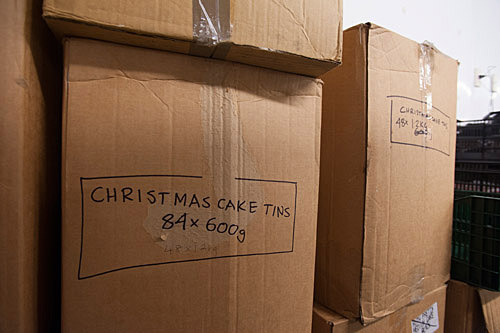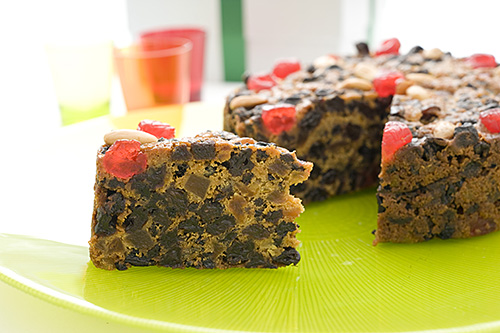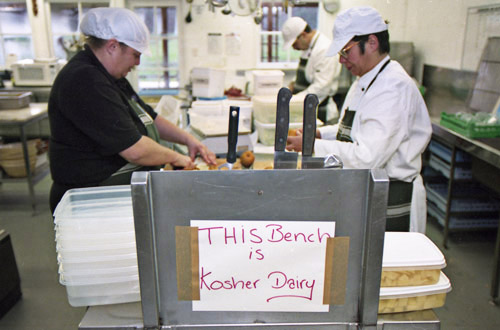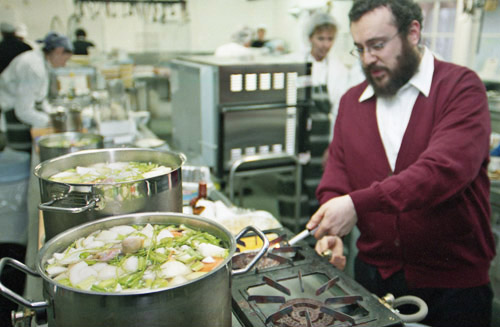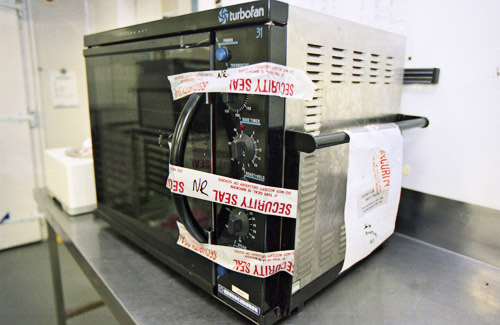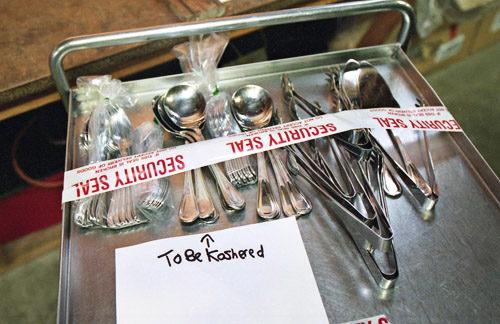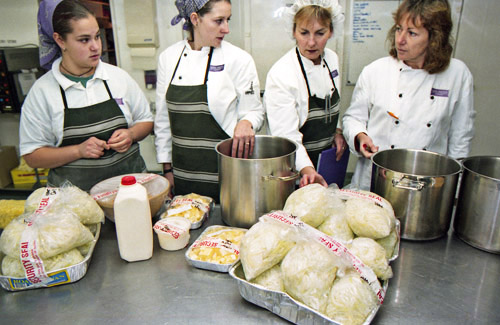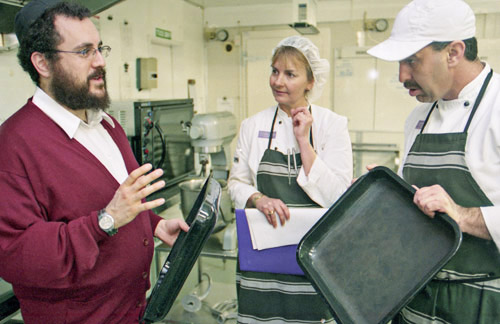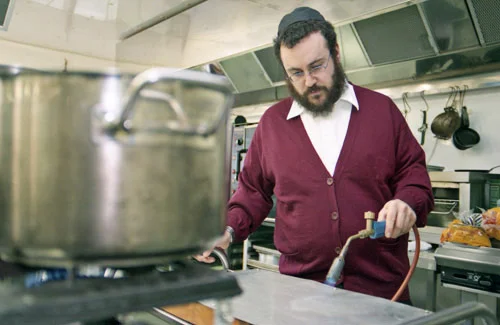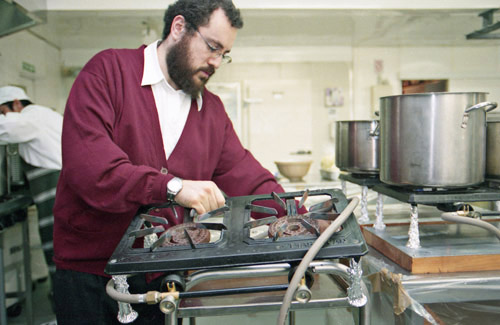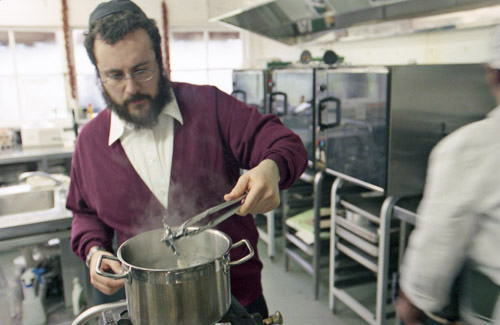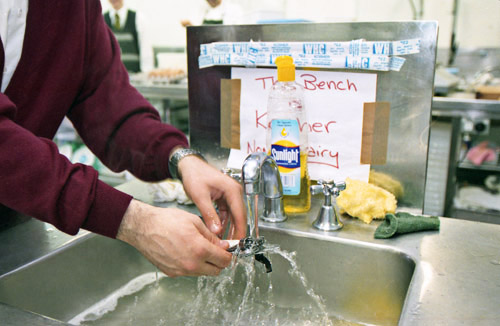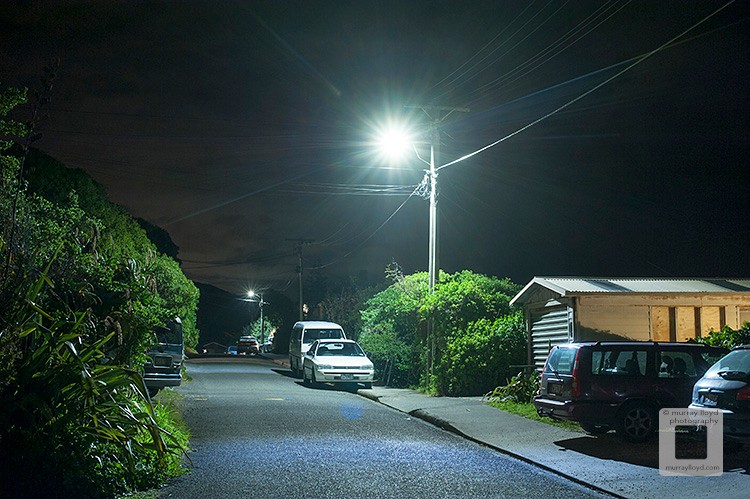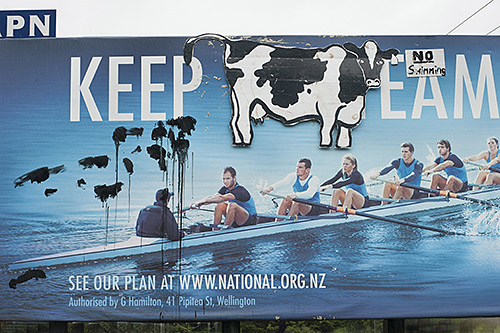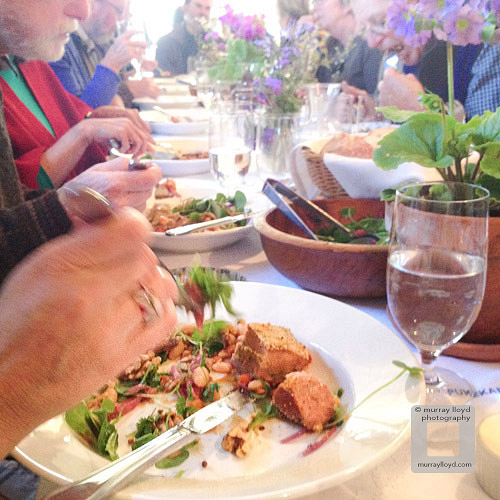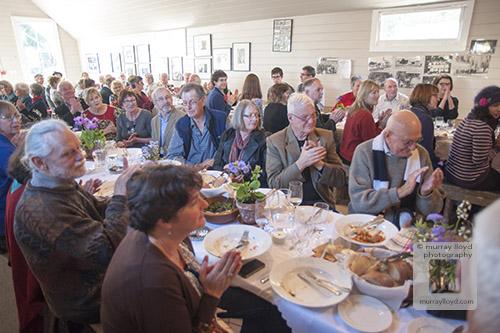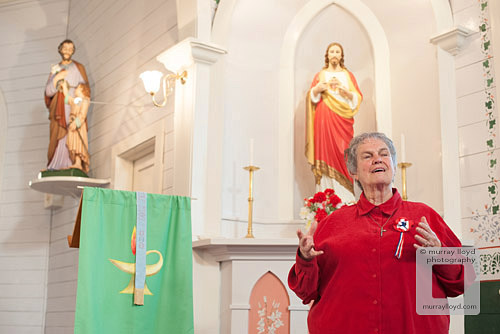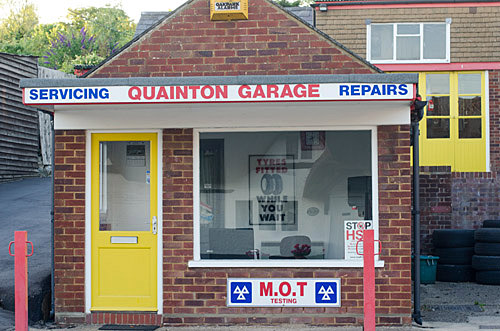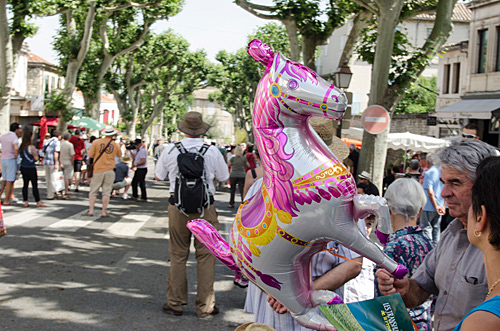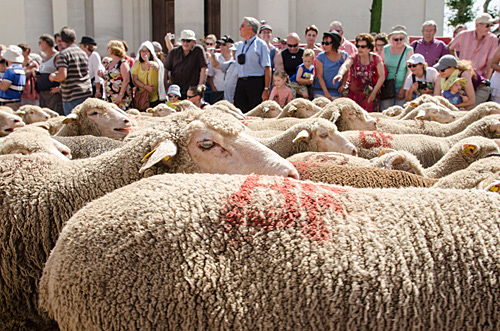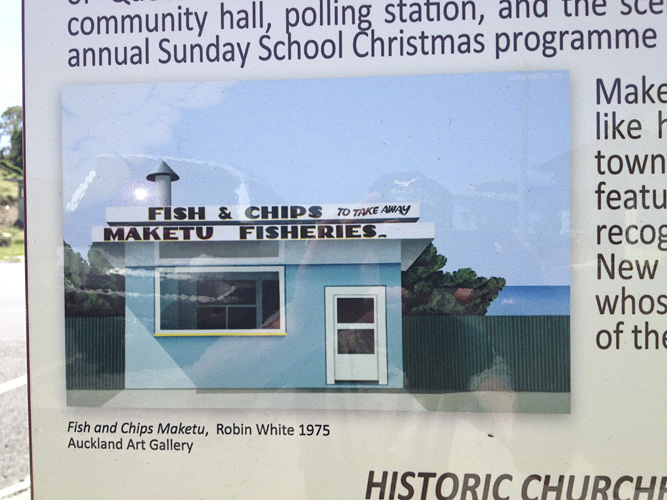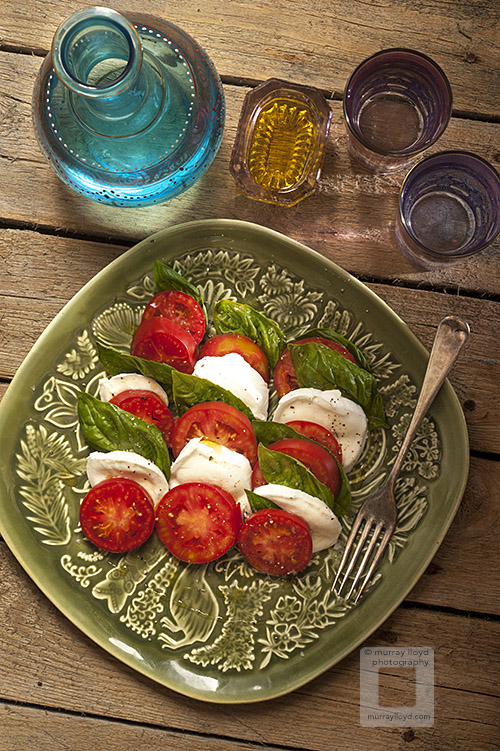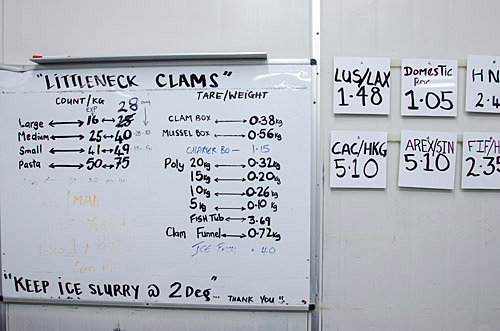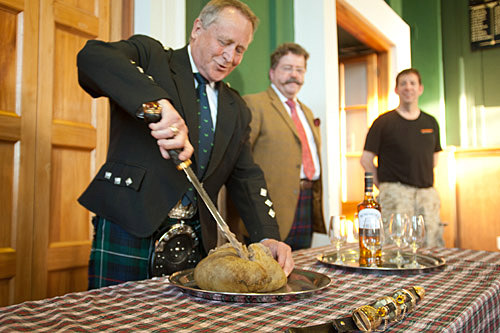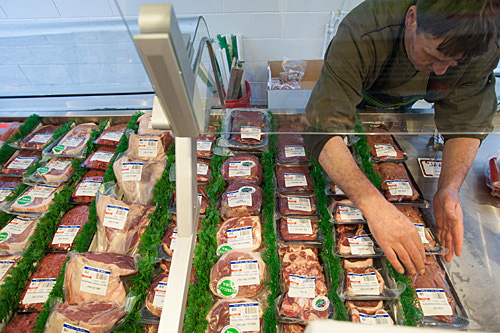The smells and taste of the Middle East came to Kapiti on Friday evening. 24 participants paid $50 per head to attend a chef-less cooking class at Kapiti College. Organised by Keryn Mells, the first Kapiti Kitchen Class, in teams of three, cooked recipes from the Ottolenghi book Simple. Although there were a few mishaps, the food was successfully turned out in less than two hours. Following laminated instructions, the participants cooked nine dishes that included chicken with ginger, miso and lime; mustardy cauliflower cheese; and fish cake tacos with mango, lime and cumin yogurt. Simple indeed.
Fabulous Fungi
The fragile beauty of gourmet mushrooms is on display in a container parked up in Paraparaumu. Mushrooms are high in Vitamin B and D and also have high protein, making them a valuable food source for vegans and vegetarians. From Lindale Village, Jude Horrill and Brent Williams have begun harvesting phoenix, oyster and shiitake mushrooms under the name Lindale Gourmet Mushrooms. The operation currently produces 20Kg per week but a second container will allow the business to scale up to 50-60kg by August 2018. The couple are hoping to supply seven top end restaurants and has already signed on Wellington’s Ortega Fish Shack. The mushrooms are very popular at Te Horo and Paraparaumu markets and will soon be available at Wellington’s Harbour Side market each Sunday.
Mushrooms start life in a petri dish as mycelium before being transferred into jars of organic rye grain. Once the grain has been colonised by the mycelium it is transferred into bags containing oak and soy hull pellets. The mycelium is fooled into thinking the bags are oak trees and grows outward towards oxygen through tiny pin pricks in the bags. The bags are hung in a temperature and humidity controlled container, where the autumn like conditions cause the mushrooms to fruit. From the petri dish it takes about 10 weeks until harvest. For every kilo of dry substrate (the oak and soy) the operation presently produces 1.1kg of mushrooms and Williams thinks 1.5kg is possible. The bags can produce up to three harvests before the substrate is recycled into compost.
Lindale Gourmet Mushrooms is aiming to be sustainable and off grid and production has exceeded expectations.
Making Lap Lap in Vanuatu
Lap lap is a traditional Vanuatu dish wrapped in leaves and cooked above ground on hot stones. Mangaliliu Village has a strong heritage in making lap lap and this was seen when staying in the village recently.
Starting at 6 AM (photography in this light was a treat) the lap lap was made on Sunday morning by the women and children from the extended family for lunch following a session in Church.
With no fridge available two chickens were freshly slaughtered for the occasion and were plucked by the children. Aside from the lap lap faol seen here (chicken), other versions are dakdak (duck), fis (fish), mit (meat), taro, maniok (cassava), yam and banana. There are also regional variations.
GoodBuzz in Wainuiomata
Kombucha, booch and SCOBY are new words in my vocab after a visit to photograph the GoodBuzz soft drink factory in Wainuiomata. The GoodBuzz process combines sugar, tea and water (from the Te Puna Wai Ora artesian aquifer in Petone) with the SCOBY (symbiotic culture of bacteria and yeast) and turns into an effervescent, healthy, non-alcoholic drink.
In the short time GoodBuzz has been operating they already have five kombucha brews in more than 60 cafes in Wellington, Christchurch, Hawkes Bay, New Plymouth and Nelson, and recently have been included in Auckland’s Nosh outlets.
The drinks come in five flavours - Origins, Green Jasmin, Lemon and Ginger, Jade Dew and Feijoia. A new brew made with coffee cherry (the outer red skin of discarded coffee beans from Go Bang in Petone) with an amazing light apple flavour is coming soon.
Each brew takes 8-10 days to ferment and another 7-10 days of bottle conditioning before heading out the door. The best before date is four months unchilled (a bonus when there is space restrictions in the fridge), and can be extended to nine months if refrigerated.
Another buzz emanating from the factory came from discovering owner Alex Campbell and I grew up in the same small Northland town – Kaikohe. This is where Alex’s first memories of kombucha came from – his grandmother Amy made what she called Manchurian Mushroom tea in the 1970’s. Kaikohe Kombucha - who would have thought?
Making Ruth Pretty's Xmas Cakes
Every year in August Ruth Pretty’s commercial kitchen gets into the mid-winter Christmas spirit. It’s the start of a festive ritual which ends with more than 4000 Christmas cakes despatched for celebrations far and wide by the special December day. The never-published Christmas cake recipe arrived hand-written after Ruth asked her staff for contributions for end of year client gifts. Thirty five other recipes were tried but fell short of the magical combination.
Long-time Ruth Pretty staff member, Carla Carkeek bakes 74 cakes a day several days a week from August until December. One year 17,000 Christmas cakes were made as staff gifts when two banks merged (Carla had extra help for this one). The cake won top prize in Christchurch’s 2007 Royal A&P Show commercial bakery section and at least one cake a day heads offshore, delivered mainly to expats in Asia and as far as soldiers in Afghanistan and elsewhere.
The fruit is first soaked in sherry and after the cakes are cooked they get doused in brandy, ensuring a long life.
One cake in 36 is cut and tested, with the slices then devoured by visitors to Ruth’s shop. Made by Carla’s steady hands, the testing seldom finds errors. Although one year the team did pick up a change in the potency of Hansell’s essences after the company changed hands.
Watching her handle 23 different ingredients to make 74 cakes and prepare mis-en-plas for the next day’s 74, it’s easy to see why Carla is referred to as the Christmas Cake Queen.
Koshering Ruth Pretty's Kitchen
To be accepted as kosher, certain foods which are completely cooked by a non-Jew (bishul akum) may not be eaten, even if the foods are kosher and are cooked with kosher utensils. Ruth Pretty calls on a local Rabbi to sanction the food for the times she has catered Jewish events in Wellington (this was for a Bar Mitzvah). Foods that generally come under the category of bishul akum are:
Foods that cannot be eaten raw, such as meat or grains. (This excludes foods that can be eaten either cooked or raw, such as apples or carrots.)
Foods that are considered important, "fit to set upon a king's table." There are various opinions regarding what are considered "royal foods."
The key is for the Rabbi to participate in the cooking in a meaningful way in order to render the food kosher. If a non-Jew cooked the food alone, without Jewish participation, the food and utensils are not regarded as kosher.
These photos were taken with 35mm film and I can't help thinking they have a natural and organic feel, resonating well with the Koshering.
Film Noir Photos in Kapiti | Murray Lloyd Photography
It was good fun trawling the streets of Kapiti to take photos of new LED lighting. Other locations were more industrial but this one felt like film noir. Maybe I should have posed a model staring into space out of an open car door in a similar way to Gregory Crewdson. He established an international following creating cinematic, dreamlike images of American suburbs.
Who will get wasted next Saturday? | Murray Lloyd Photography
Fake Food at Dowse Art Museum | Murray Lloyd Photography
Cigarette butts, painted flies, an earthworm, and fake sushi
now showing at Wunderrūma: New Zealand Jewellery (finishes 28th Sept). If you are still hungry, next door the food theme continues with sheep entrails (be thankful for the BW photo) swiss rolls and neenish tarts in a very well executed exhibition of Peter Peryer's work ending 23rd November. Bon Appetit
French Flag Flies at Otaki | Murray Lloyd Photography
The French flag was flying again at PukeKaraka Marae in Otaki where guests assembled for Ruth Pretty’s “Casssoulet and Karaka Trees”, a Wellington on a Plate event.
Fr. Jean-Baptiste Comte, a French Roman Catholic Priest founded the mission at Pukekaraka 170 years ago in 1844 and brought with him a typical French passion for food.
Together with local Maori, Comte built a flourishing community with three flour mills, maize, wheat and food crops that supplied shops in villages from Otaki all the way to Wellington. Was this the first Wellington on a Plate?
After a formal welcome onto the marae by Ngāti Kapu and an appropriately crowing rooster, guests were invited into 'Hine Nui o te Ao Katoa' which translates into 'Mary, Great Woman of the Whole World, Woman of Light'.
Guests dined on baked potato and eel rillettes before the much anticipated cassoulet was served with a salad of pear, walnut and perennial greens
A walk up the 'Cavalry ' was needed after the wholesome lunch where Rawiri Rikihana gave a short history of the area.
St Mary’s Church provided a fascinating backdrop with both local custodian Irene Mackle and Mary McLeod (Martha’s Pantry) giving an intimate account of the beautiful interior. Restored lovingly in the early 1990's it was easy to see why this Church has the highest Historic Places rating. Built in 1859, St Mary's is the oldest Catholic Church that has been in constant use in New Zealand
Fr. Comte flew the French flag to signify feast days for special prayers. As champion of harmonious relations between Maori, Europeans and Priests I am sure he would have had no hesitation hoisting it once again for Ruth’s “Cassoulet and Karaka Trees”
Mobile Fish 'n' Chips at Quainton | Murray Lloyd Photography
Mushy peas or curry sauce with your Fish 'n' Chips? Quainton, a very cute English village of about 1200, located just north of London, gets visited every Wednesday evening from 5.30 – 8 by a mobile fish and chip van. Howe and Co have been delivering fish and chips from “coast to door” for more than 80 years, currently making hundreds of stops to more than 90 villages in a 50km radius. New Zealand does not have the same mobile service with fish and chips (although Mr Whippy hints at this) but we do at least have a mobile butcher in Waikanae.
The mushy peas certainly add a fresh colour to the golden tones but the quality of the fish 'n' chips did not match the high standard of service. Maybe I am spoiled by the excellent quality easily found in New Zealand.
7 stands, 3 lights and a bagel | Murray Lloyd Photography
The saying photography is 90% “moving furniture” and 10% photography was proved when I was asked to photograph one pulled pork bagel for Wholly Bagels in Wellington. On location, at night, saw three lights, one background, two diffusers, two bounce boards and seven light stands in action. Pulled pork originated in the southern states of the US but seems to be everywhere now.
Running of the Sheep in France | Murray Lloyd Photography
The Fete de la Transhumance is celebrated in St Remy de Provence annually on Whit Monday. This traditional French festival commemorates the days farmers trekked for days to take their sheep from drought stricken lowland in search of greener pasture in the mountains. I am sure Van Goph (sans left ear) would have appreciated the 3000 sheep, goats and donkeys being herded through the town for the 31st Fete de la Transhumance. He was living (self-admitted) in an asylum in St Remy between 1889 and 1890. The river of sheep winding through the narrow streets of the town resembled a readymade impressionist painting.
Unlike the running of the bulls in Pamplona, no instant fines were handed out to people with cameras. The sheep did two laps of the town before departing – I hope they did not notice the menus.
More to Maketu than Masterchef | Murray Lloyd Photography
It is no surprise Maketu produced the latest MasterChef winners, the town has food in its bones. Maketu was named after the origonal kumara growing fields in Hawaiki by Te Arawa when their canoe landed at the mouth of the Kaituna River in 1340. The river and estuary have been historically referred to as the "food bowl" of the Te Arawa. 400 years later the Robin White painting Fish and Chips, Maketu immortalised the local fish and chip shop. Not sure why the shop has not been given the Robin White treatment.
Maketu Pies carry on the food vibe. They distribute pies all over the North Island and have recently introduced a gourmet range called Sunday's Best. Their standard range is well regarded and includes a highly rated mussel pie.
Historically the estuary provided a diverse range of seafood including pipi, koterotero (sea-anenome), tuangi (cockles), flounder, titiko (mud snail), mussels, pāua, pūpū, scallops, kukuroa (horse mussels) and fish. It seems appropriate the winners of MasterChef Karena and Kasey Bird are described as "seafood loving sisters" and their signature dish is paua ravioli.
Getting passionate in the studio | Murray Lloyd Photography
Italian Flavours in Paraparaumu | Murray Lloyd Photography
Basil grown from seed in full sunshine, Isle of Capri tomatoes freshly plucked from the garden and fresh buffalo mozzarella - Insalata Caprese - It is quite simply one of the greatest pleasures of summer and is one of my favourite dishes . The flavours and textures work together brilliantly - here's to Italian food.
Fresh live clams from NZ to USA | Murray Lloyd Photography
Working every day of the year, the team at Dunedin's Southern Clams can have an average of 4.5 tonnes of clams ready for market in six hours. In winter the team in the water harvest by torchlight and even have waves crashing over them on occasions. Director Roger Belton started Southern Clams in the early 1980's after his French girlfriend took him to experience the French food culture. Eighty percent of the clams are exported, particulary to the east coast of the USA where the large Italian poplulation need them for Spagetti alle Vonglole. The remaining clams are sold domestically at restaurants, wholesalers and the New World and Pak n Save supermarkets.
Southern Clams take sustainability very seriously even investing in forestry in order to be carbon accountable. They have never harvested their full quota of clams and are contantly looking for new ways to reduce bycatch.
I was just thankful my waders didn't leak.
7 whiskies, haggis , Wellington | Murray Lloyd Photography
Half a century of haggis history was piped into Wellington College’s Firth Hall to celebrate the final Regional Wines and Spirits whisky tasting of the year. Highly sought after tickets were only made available to regular whisky imbibers at Regionals’ events throughout the year. The Haggis was delivered with pomp and poetry before being served with mash and washed down with seven different whiskies. The recipe for the haggis originated at Tommy Jack’s Miramar butchery in the 1960’s and presently resides with the Island Bay butcher, Don Andrews. The whiskies were 10year old Ardberg, a Longrow Rundlets and a 2001 Kilderkins, a Bunnahabhain, Glendronach 1994, a Highland Park, a Longmore 2002 and a Bowmore aged 12 years.
Photos for Marae Fundraiser Event | Murray Lloyd Photography
Two hundred hangi’s at $10 each might seem a small dent in the seven figure mountain of fundraising needed for the Mahara Gallery upgrade. But you cannot quantify the deepening of the relationship between the Gallery and Te Atiawa ki Whakarongotai who prepared the hangi together.
Waikanae Butchery goes mobile | Murray Lloyd Photography
After two years of planning the big day has arrived and Andrew Stroonbergen and Peter Hedgecock load up Waikanae Butchery’s brand new Fiat Ducato Maxi van. The van was built in Holland and shipped to NZ so Andrew can supply his great produce to Wellington’s Chaffers Market on Sundays. Now, following an invitation from Joanne Welch at Summerset Retirement Village, Andrew drives his van around four retirement villages on the Kapiti Coast each Friday supplying the good folk with lovely fresh meat and his famous smallgoods.
